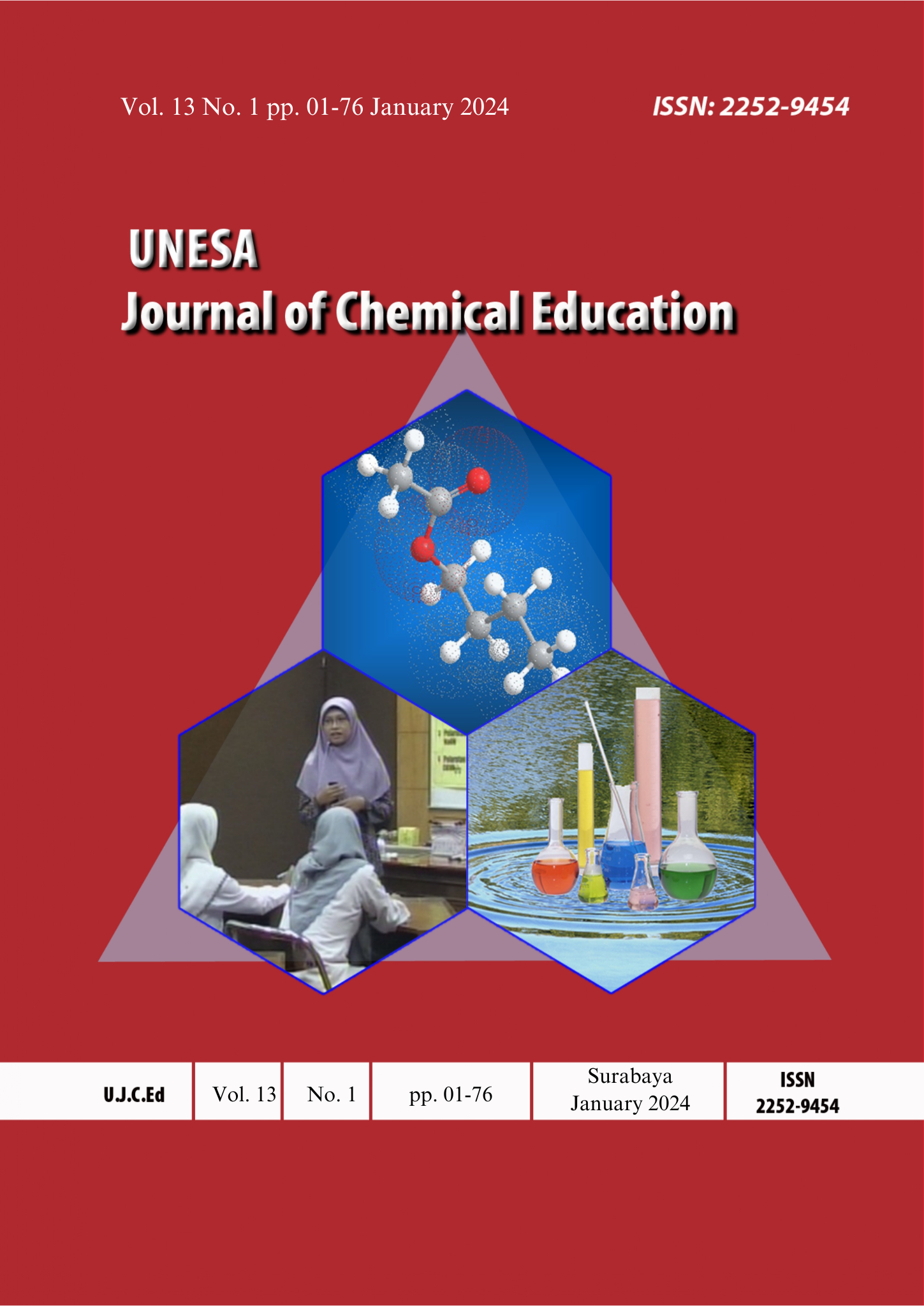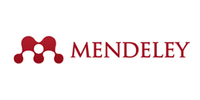EFFECT THE PROBLEM-BASED LEARNING MODEL ON ABILITY MULTIPLE REPRESENTATIONS OF XI-GRADE STUDENTS ON ACID-BASED TOPIC
DOI:
https://doi.org/10.26740/ujced.v13n1.p25-29Keywords:
: problem-based learning, multiple representations, acid-baseAbstract
It takes the ability to conceive at three different levels of representation, macroscopic, sub microscopic, and symbolic to comprehend acid-base material. Still, most students are unable to make the connection between the three levels of representation. As a result, instruction that helps students connect various representations in acid-base content is required. The PBL model is one appropriate learning paradigm that can be used. The purpose of this study is to determine whether PBL models and conventional models differ in their capacity to support numerous representations. A quantitative experiment using a quasi-experimental study design is the research methodology employed. A post-test-only control group design is used in this study. The samples of this study were XI MIPA 3 as a control group of 34 students and XI MIPA 4 as an experimental group of 33 students. Simple random sampling was used to get the research samples. A post-test consisting of multiple-choice questions was the instrument utilized. With a reliability score of 0,802 across 20 items, the empirical validation results indicate that all instruments are appropriate for use as research measures. methods for gathering data through tests. Data collection techniques in the form of tests. The data analysis technique in this study is descriptive and inferential statistics with hypothesis testing in the form of the Independent Sample t-Test. With a sig value of 0,000 < 0,05, the results demonstrated that there is a difference in the ability of multiple representations between those taught using the PBL model and those taught using the conventional model.
Downloads
References
Sari, C. W. & Helsy, I. 2018. Analisis Kemampuan Tiga Level Representasi Siswa Pada Konsep Asam-Basa Menggunakan Kerangka Dac (Definition, Algorithmic, Conceptual). JTK (Jurnal Tadris Kim.), Vol 3, No 2, pp. 158–170.
Indrayani, P. 2013. Analisis Pemahaman Makroskopik, Mikroskopik, dan Simbolik Titrasi Asam-Basa Siswa Kelas XI IPA SMA serta Upaya Perbaikannya dengan Pendekatan Mikroskopik. Jurnal Pendidikan Sains, Vol 1, No 2, pp. 109–120.
Ardhana, I. A. 2020. Dampak Process-Oriented Guided-Inquiry Learning (POGIL) terhadap Pengetahuan Metakognitif Siswa pada Topik Asam-Basa. Hydrogen: Jurnal Kependidikan Kimia, Vol 8, No 1, pp. 1–10.
Nurjanah, R. S, Yuniar, & Pratiwi, R. Y. 2022. Analisis Kemampuan Multipel Representasi Kimia Siswa Kelas Xi Pada Materi Asam Basa Di Sma Muhammadiyah 2 Palembang. Prosiding Seminar Nasional Pendidikan Kimia, Vol 1, No 1 pp. 314–324.
Smith, K. C., Nakhleh, M. B., & Bretz, S. L. 2010. An Expanded Framework for Analyzing General Chemistry Exams. Chemistry Education Research and Practice, Vol 11, No 3, pp. 147–153.
Suswati, U. 2021. Penerapan Problem Based Learning (PBL) Meningkatkan Hasil Belajar Kimia. Teaching: Jurnal Inovasi Keguruan dan Ilmu Pendidikan, Vol 1, No 3, pp. 127–136.
Arends, R. 2008. Learning to Teach: Belajar untuk Mengajar, Buku Dua Edisi ke 7. Penerjemah: Helly Prajitno Soetjipto & Sri Mulyani Soetjipto. Yogyakarta: Pustaka Pelajar.
Dewanto, S. P. 2008. Peranan Kemampuan Akademik Awal, Self-Efficacy, dan Variabel Nonkognitif Lain Terhadap Pencapaian Kemampuan Representasi Multipel Matematis Mahasiswa Melalui Pembelajaran Berbasis Masalah. Educationist, Vol 2, No 2, pp. 123–133.
Islamiah, A. F., Rahayu, S., & Verawati, N. N. S. P. 2018. Efektivitas Model Pembelajaran Problem Based Learning Berbantuan LKS Terhadap Kemampuan Berpikir Kritis Fisika Siswa SMAN 1 Lingsar Tahun Ajaran 2016/ 2017. Lensa: Jurnal Kependidikan Fisika, Vol 6, No 1, pp. 29–36.
Siregar, W. D. & Simatupang, L. 2020. Pengaruh Model Pembelajaran PBL (Problem Based Learning) terhadap Aktivitas dan Hasil Belajar Siswa pada Materi Asam Basa. J. Inov. Pembelajaran Kim., Vol 2, No 2, pp. 91–96.
Downloads
Published
Issue
Section
License
The license terms of the Creative Commons Attribution-NonCommercial 4.0 International (CC BY-NC 4.0) requires attribution to the original creator, permits non-commercial use, and does not allow for the application of legal or technological restrictions on others' use.
 Abstract views: 80
,
Abstract views: 80
, PDF Downloads: 63
PDF Downloads: 63













